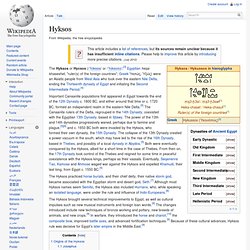

Fukushima. The Fukushima Daiichi nuclear disaster (福島第一原子力発電所事故, Fukushima Daiichi ( pronunciation) genshiryoku hatsudensho jiko?)

Was a nuclear disaster at the Fukushima I Nuclear Power Plant that began on 11 March 2011 and resulted in a nuclear meltdown of three of the plant's six nuclear reactors.[6] The failure occurred when the plant was hit by a tsunami that had been triggered by the magnitude 9.0 Tōhoku earthquake.[7] The following day, 12 March, substantial amounts of radioactive material began to be released,[8] creating the largest nuclear incident since the Chernobyl disaster in April 1986 and the only (after Chernobyl) to measure Level 7 on the International Nuclear Event Scale[9] (initially releasing an estimated 10–30% of the earlier incident's radioactivity).[10] In August 2013, it was stated[by whom?]
That the significant amount of radioactive water was among the most pressing problems affecting the cleanup process, which is expected to take decades. Jacquemart-Andre. Irrision. Hyksos. The Hyksos or Hycsos (/ˈhɪksɒs/ or /ˈhɪksoʊz/;[3] Egyptian heqa khaseshet, "ruler(s) of the foreign countries"; Greek Ὑκσώς, Ὑξώς) were an Asiatic people from West Asia who took over the eastern Nile Delta, ending the Thirteenth dynasty of Egypt and initiating the Second Intermediate Period.[4] Important Canaanite populations first appeared in Egypt towards the end of the 12th Dynasty c. 1800 BC, and either around that time or c. 1720 BC, formed an independent realm in the eastern Nile Delta.[5] The Canaanite rulers of the Delta, regrouped in the 14th Dynasty, coexisted with the Egyptian 13th Dynasty, based in Itjtawy.

The power of the 13th and 14th dynasties progressively waned, perhaps due to famine and plague,[5][6] and c. 1650 BC both were invaded by the Hyksos, who formed their own dynasty, the 15th Dynasty. Origins of the Hyksos[edit] There are various hypotheses as to the Hyksos' ethnic identity. Most archaeologists[who?] As to a Hyksos “conquest”, some archaeologists[who?] Hyssop. Characteristics[edit] Hyssop is a brightly coloured shrub or subshrub that ranges from 30 to 60 cm (12 to 24 in) in height.

The stem is woody at the base, from which grow a number of straight branches. Its leaves are lanceolate, dark green in colour, and from 2 to 2.5 cm (0.79 to 0.98 in) long.[1] During the summer, the plant produces bunches of pink, blue, or, more rarely, white fragrant flowers. These give rise to small oblong achenes.
History and cultivation[edit] Hyssop has been in use since Classical antiquity. The species as a whole is resistant to drought, and tolerant of chalky, sandy soils. Cultivars include 'Blue Flower'. Harvest[edit] Under optimal weather conditions, herb hyssop is harvested twice yearly, once at the end of spring and once more at the beginning of the fall. The fresh herb is commonly used in cooking. Uses[edit] The plant is commonly used by beekeepers to produce a rich and aromatic honey.
Medicinal uses[edit] References[edit] External links[edit]